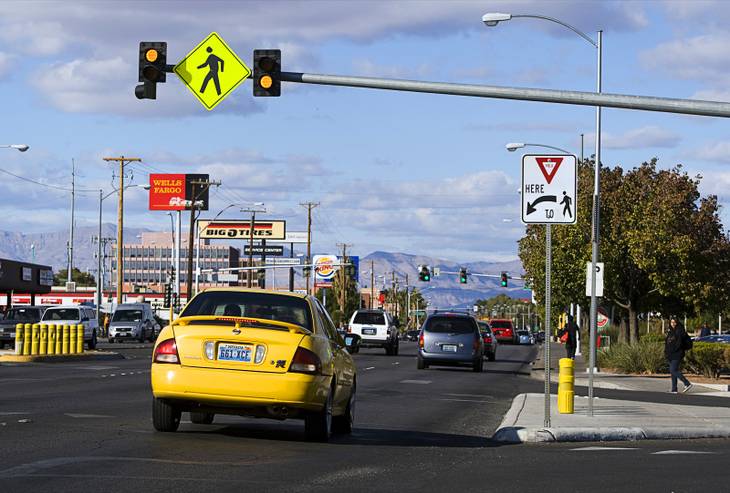Maryland Parkway is the busiest north-south street in Las Vegas after the world-famous Las Vegas Boulevard.
Because it’s a direct route between downtown Las Vegas and McCarran International Airport and passes some of the city’s top traffic generators — UNLV, the Boulevard mall and Sunrise Hospital & Medical Center — transportation leaders are looking to enhance Maryland Parkway and have taken the first step in the transition.
To David Swallow, the Regional Transportation Commission of Southern Nevada’s project manager on the Maryland Parkway Alternatives Analysis Study, the four-mile stretch of Maryland Parkway is a blank canvas for a potential work of art.
All that’s missing is the subject and the medium.
“On this project, we decided to take a step back and get some ideas from the public before developing any kind of a plan,” Swallow said. “On most of our projects, we’ll make a proposal and gather public comments on it, but this is a little different.”
To gather comments, the RTC conducted three public workshop meetings in November to learn how motorists, bicyclists and pedestrians use the corridor and how they’d like to see it improved.
To solicit ideas, the RTC urged the public to dream big. Among the alternative transportation technologies suggested to solicit public response, the RTC said the route could be served with buses, modern-day streetcars, light rail, monorail or even a subway — not that those more expensive proposals are going anywhere.
There was also discussion about widening the road and adding sidewalks. Maryland also intersects with some of the busiest east-west bus routes at Sahara Avenue, Flamingo Road and Tropicana Avenue, making it a critical bus transfer area.
But fixes also could be as simple as narrowing existing traffic lanes by 1 foot to make room for a dedicated bus lane or a lane for bicycle traffic. Currently, Maryland Parkway carries an estimated 9,500 passengers a day, and Bus Route 109, which uses Maryland, is one of the RTC’s busiest routes.
A total of about 50 people attended the three meetings, and Swallow said their initial response is for the RTC not to do anything that would diminish traffic capacity or shift traffic to other nearby north-south streets, Eastern Avenue and Paradise Road.
Concerns were raised about foot traffic near UNLV where two crosswalks cross Maryland and high-intensity flashing lights activated by pedestrians can slow traffic. Pedestrian overpasses are a possibility. A pedestrian bridge crosses Maryland at Sunrise Hospital.
Swallow said he only expects Maryland to get busier as relationships grow between expanding downtown technology startups and UNLV. The RTC is considering that many of the new arrivals to downtown Las Vegas will be bus and bicycle users who could use Maryland to commute to and from the university.
“The RTC has long recognized that this corridor has the potential to benefit from substantial investment in the transit infrastructure,” Swallow said.
How much will it all cost? It’ll depend on what improvements are made, but Swallow said the RTC could apply for federal funding, making community input critical to the study process.
Swallow said the public can still submit comments on Maryland Parkway’s needs on theRTC website.
Public comments will be compiled and the top alternatives reviewed in public workshop meetings in the spring. The final alternatives will be refined for workshop meetings in the fall when the top alternatives will be determined.

